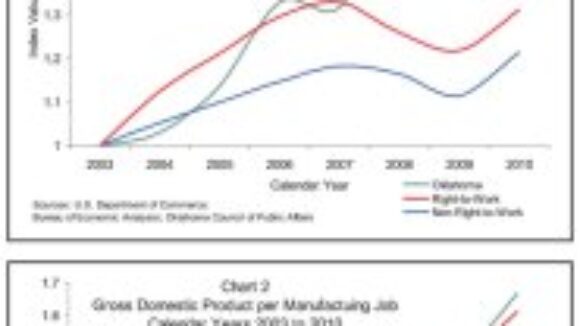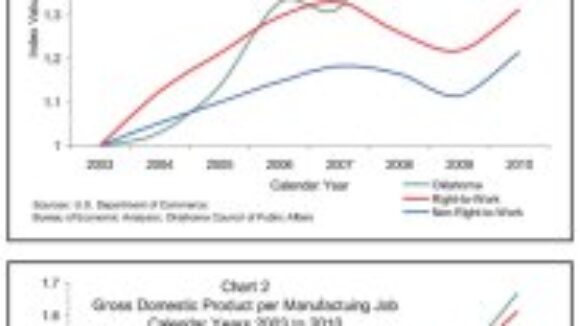New evidence "Right To Work boon for Oklahoma"
Families are fleeing compulsory unionism states and moving to Right Work States like Oklahoma. And, that is not all that is OKay in Oklahoma since it became the 22nd Right To Work state in 2001. From a recent analysis by J. Scott Moody and Wendy P. Warcholik of the Oklahoma Council of Public Affairs: On September 25, 2001, Oklahoma voters went to the polls and passed a constitutional amendment—Right to Work (RTW)—which gave workers the choice to join or financially support a union. This made Oklahoma the 22nd state in the union to join the ranks of Right To Work states. Fast forward to today, and opponents of the law are still at work trying to discredit it. A recent study by the [Big Labor related] Economic Policy Institute (EPI), for example, claimed that Right To Work in Oklahoma has been a dismal failure. One of EPI’s most important pieces of evidence is that manufacturing employment is lower today than it was before Right To Work. [However,] the EPI study did not consider whether Oklahoma’s manufacturing industry may have chosen to boost productivity instead of hiring more workers. Chart 1 shows the growth in Gross Domestic Product (GDP) of the manufacturing industry from 2003 to 2010 using a growth index. Oklahoma’s manufacturing GDP has grown 45 percent in that time period, outstripping that of the average manufacturing growth in in non-Right To Work states (22 percent).

